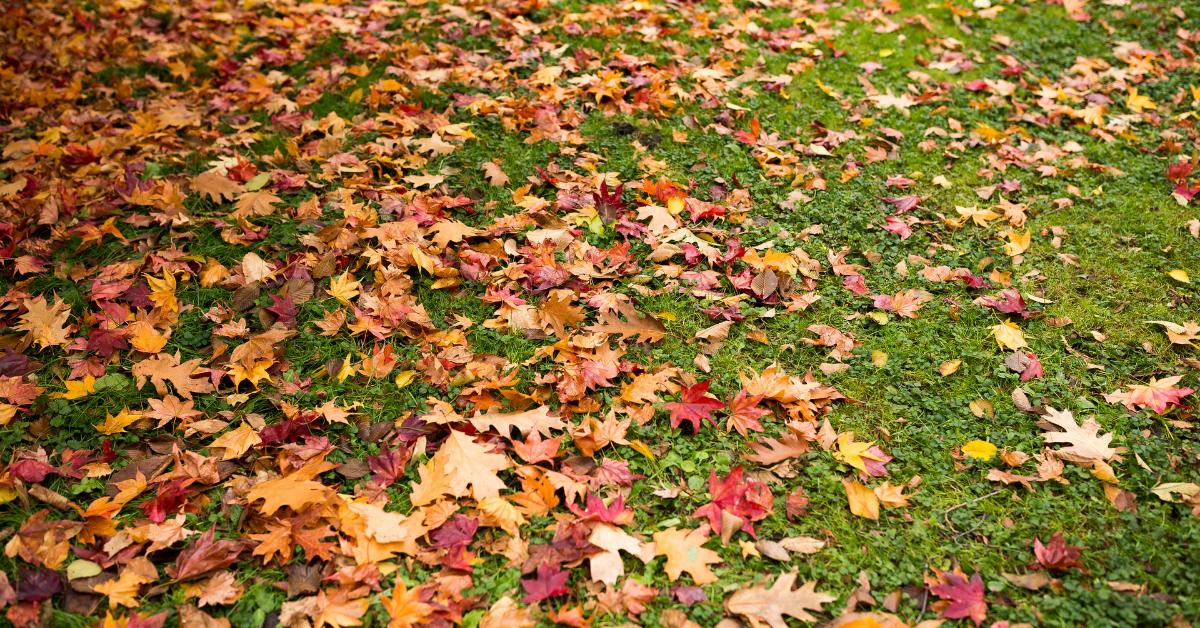
The changing of the season is often appreciated for the deciduous trees’ leaves showcasing beautiful hues of red, yellow and orange. However, once the leaves have fallen, they become a chore.
While some insist you should just leave the leaves, there is some nuance to that practice. Fallen leaves do decompose and provide valuable nutrients to the soil. They even provide a habitat for important insect species over the winter. Yet leaf litter is most useful in wooded areas.
Leaving a thick layer of leaves on a lawn blocks out sunlight and traps excess moisture against the turfgrass, resulting in a damaged lawn in the spring. They also provide an environment for rodents and diseases to wreak havoc.
Another issue with leaving leaves on the ground is they can be washed away to surface water via storm drains. They release phosphorus and nitrogen as they decompose and if this occurs in the water, it can create an imbalance in the water ecology, resulting in excess algae growth.
If your clients are calling you in an attempt to avoid raking leaves themselves, there are several different management methods that can be used.
While there are the tried and true options of raking, blowing or vacuuming leaves, below are some other ways to utilize fall leaves.
Mow Them
Rather than raking or blowing leaves off the property, mow the leaves so they become shredded into smaller pieces on the lawn. Just as grass clippings don’t add thatch in the lawn, mowing leaves and leaving them in the lawn will not contribute to thatch.
This is best to do if the customer has a light layer of leaves on the lawn. The shredded leaves will eventually decompose and add nutrients to the yard. Make sure you can see the blades of grass through the leaves.
Mulch Them
If the volume of fallen leaves is far too thick to mow, another option is to utilize them as mulch in the customer’s garden beds. They can be used to insulate shrubs and perennials as fallen leaves can serve as a barrier for spring weeds from sprouting among your client’s shrubs, and there’s no purchase necessary, unlike other organic mulches.
It’s best to treat them as any other mulch and not apply more than 3-4 inches and keep them away from stems and trunks. The best leaves for mulch are maple as they break down easily. On the other end of the spectrum, oak and sycamore leaves take a while to break down and add organic matter and nutrients to the soil. Shredded leaves will break down more quickly.
Compost Them
Leaves are rich in carbon and can mix well with nitrogen-rich grass clippings for a balanced compost pile. You can make the most of what autumn brings by turning fall leaves into compost, which can enrich the soil, loosen heavy soils and help sandy soils retain moisture.
You can collect the leaves and provide them to your customers to compost themselves or you can create your own compost pile at your facilities, providing yourself with rich organic matter that can be used for future jobs.
Complete Landscaping Services, based in Bowie, Maryland, began composting the yard debris that was resulting from the services that they performed on their commercial clients’ properties over a decade ago. Spring pruning debris and excess mulch along with fall leaves are brought back to the recycling area at their corporate headquarters where they are ground, aged, and reused in landscape applications throughout the seasons.

